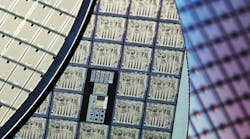Photo 57327298 © Tihis | Dreamstime.com
Comments
Comments
Congratulations go to the outstandingly patient and farsighted Professor Leon Chua, who back in 1971 at Berkeley, University of California, expounded a theory about memristors. These were described as the fourth building block of circuits after resistors, capacitors, and inductors.
Now scientists at Hewlett Packard have fabricated the devices and used them to build a form of transistor, bringing reality to Professor Chua’s theories. His delight at this is understandable given his 36-year wait.
A clue to the potential importance of memristors lies in the mem syllable. These devices will remember the amount of charge that has been through them and will hold that thought even after power is switched off.
Most of today’s computers rely on DRAM, which, of course, lose data when power is shut down. Because of their memory capability, memristors would conceivably be able to open up a computer at precisely the spot where the user stopped working on their previous session. Rather nice.
The development team currently working on these devices have already demonstrated that by putting two memristors together—a configuration called a crossbar latch—it could do the job of a transistor.
Not only that, these new devices can be manufactured in much smaller formats. Thus, the implications for the continued advancement of Moore’s Law look very positive.
The theory proposed by Gordon Moore, one of the original founders of Intel, says that the number of transistors on a chip could double every two years. Like Professor Chua, Moore was also a farsighted man as well. So far, his Law is working out well, but it does rely on a succession of pioneering developments in chip technology to remain sustainable.
Memristors look likely to be on of those developments. Let’s be clear on one thing, though. Don’t expect to see these devices for a while yet.
Engineers always demonstrate a healthy skepticism when it comes to technical breakthroughs. Many think that they would only accept the use of memristors after the successful demonstration of a well-functioning, large-scale array of these densely packed devices.
So there’s plenty of engineering work to be done before they can be considered a replacement for established ubiquitous memory devices. But what price will the DRAM market pay when they are ready to roll?
